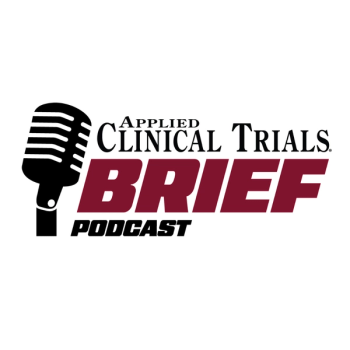
Comparing the Five Methods to Collect Patient-Driven eData
The specialized industry of collecting patient-driven eData is increasing exponentially. Patient-driven eData encompasses all electronic clinical outcome assessments - or eCOAs -- including patient reported (PRO), clinician reported (ClinRO) and observer or caregiver reported outcomes (ObsRO).
The specialized industry of collecting patient-driven eData is increasing exponentially. Patient-driven eData encompasses all electronic clinical outcome assessments – or eCOAs -- including patient reported (PRO), clinician reported (ClinRO) and observer or caregiver reported outcomes (ObsRO). This is because global government regulators want to hear directly from the patient, and because the acceleration and availability of electronic collection (vs. paper collection) improves data quality and efficiencies for data analysis and trial management. This article reviews the eCOA market and outlines the five eCOA methods that successfully support the collection of patient-, clinician- and observer- reported outcome data.
The Growing eCOA Industry
While paper diary collection is the default method for many latent adopters of new technologies, electronic capture of clinical outcome assessments is growing steadily as sponsors realize the revenue advantages of more accurate, attributable patient-reported data.
The eCOA market was valued at $200M in 2012 and is expected to reach $265M in the year 2015. The market has grown at a Compound Annual Growth Rate (CAGR) of 8.5% between 2008 and 2015. Increasing penetration of these solutions is the main factor responsible for the growth.1
The Process of Collecting eCOAs
Recommendations for collecting eCOA measures have been set forth by the FDA Guidance for Industry, Patient-Reported Outcome Measures: Use in Medical Product Development to Support Labeling Claims,2 the Reflection Paper on the Regulatory Guidance for the Use of Health Related Quality of Life Measures in the Evaluation of Medicinal Products,3 and guidelines from other regulatory agencies.4
Clinical trials using eCOA measures should be designed so:
- Endpoint models are clearly associated with the intended claims
- Measures are fit, reliable and sensitive to change
- The conceptual framework of eCOA instruments is well defined
- Evidence is compelling that eCOA data collection was completed at times specified in the protocol
As a result of these guidances, the process of collecting electronic patient, clinician and observer-reported outcomes requires much more than a collection device, database, and an instrument.
Five Reliable Collection Methods and Devices Used to Collect eCOAs
The rapid proliferation and adoption of smartphone technology is advantageous to COA data collection, since patients are more likely to own their own smartphone and require little or no training. If the eCOA device is used to collect endpoint data to support a claim, regulators require consistent measure displays, data security and compliance with strict guidelines. All of these collection modalities must be used with a backend system that securely receives all data sent in accordance with regulations and guidelines.
All eSource systems must provide authorized investigator staff with the ability to prepare and maintain eSource records throughout the life of the trial and beyond. When used to collect symptom data for post-marketing purposes, such requirements may not apply.
Each eCOA collection method and device must be thoroughly vetted in order to comply with various FDA, EMA and country regulations and requirements for trustworthy data. As a result, there are currently five proven and tested eCOA technologies used by sponsors:
- Smartphone – Electronic data capture on a provisioned or existing SmartPhone that sends data to a central system for web review
- IVR (Interactive Voice Response) – Keypad or voice data capture with a central system that allows for web review by site and sponsor
- Web Browser – Browser data capture with a central system that allows for web review by site and sponsor
- Pen – Digital pen that captures data and uploads to a central system that allows for web review
- Tablet – Electronic data capture on a tablet mobile device with a central system that allows for web review
Following is a review of each collection option, recognizing that the ideal method of acquiring patient-reported data is contingent on each trial’s indication, size, complexity, length, locations, survey elements, patient population, budget and critical success factors. Further, each may be used by itself or in a combination with others, depending on how the study protocol prioritizes the preceding criteria.
Smartphone: Electronic data capture on a provisioned or existing device
Smartphones are preferred for collecting data from patients in transit. They can be integrated with medical devices and other technologies to combine objective measurements, and with IVR to streamline patient enrollment and randomization.
Similar to all devices that capture COAs, smartphones provide patients with the logically appropriate questions and items at the correct times, simplifying diary completion and ensuring that sponsors receive reports with entirely logical response structures. Smartphones are especially useful for protocols that require data from frequent or episodic incidents. Patients can be prompted to fill in responses according to the protocol time guidelines via alarms and reminders, and only allowed to enter diaries within specific time windows. This provides cleaner data than paper diary collection, and makes integration with a reminder system unnecessary.
These devices collect data in complete, logical and legible formats and may use a stylus which may be attractive to patients with challenging hand/eye coordination, arthritis, or tremors. The use of Smartphones in eCOA Systems can streamline mid-study changes by deploying changes seamlessly from a centralized server, at a scheduled time.
IVR (Interactive Voice Response)
The second most frequently used method to collect eCOAs is IVR, due to its prevalence in a wide variety of applications available on the market. IVR is familiar to use, and is favored over paper diaries for branching logic and data integrity. Like smartphones, IVR can streamline mid-study changes by deploying changes seamlessly from a centralized server, at a scheduled time.
IVR presents usability challenges for countries without advanced phone systems, and for surveys with lengthy or complex questions. Its capacity to collect patient data is impeded by the public’s low tolerance level for calls longer than five minutes. Further, IVR compliance can be strained when study participants lose track of, or tire waiting to hear, the entire list of response options, which can bias them to select the first option provided. IVR also limits the ability for clinical researchers to ask all the requisite questions. Unlike smartphones, IVR systems do not have the capacity to display graphical elements nor visual scales.
As a result, IVR technologies are employed for short and simple diaries or (more commonly) integrated with smartphones to streamline enrollment and randomization.
Web Browser
The Internet is gaining popularity as an eCOA collection modality, as global populations gain access to the Internet on a reliable basis. Like any mobile device, a browser can execute complex and lengthy diaries and questionnaires with images and visual scales, and streamline mid-study changes by deploying changes seamlessly from a centralized server, at a scheduled time.
Browser-based eCOA can be employed at the clinician site or at the patient’s home, office or school, but regulators require that it be located in a private setting with a reliable Internet connection. If used outside the clinical setting, the patient must be near the browser for episodic or frequent diary collection.
Browser-based eCOA Systems have successfully captured data on desktop computers and tablets. For acceptance by regulatory authorities, any new instrument must be proven to display consistent diaries and questionnaires on each screen, without bias.
Pen
The pen relies on the patient using a unique writing instrument on special paper printed with the diary or questionnaire. It cannot prevent patients from skipping answers, entering illogical data and entering data outside of protocol specified time windows. Since sites and patients must use assigned papers and a pen, the cost for pen eCOA collection includes all the duplication, transportation and redundant data entry costs of paper diaries plus the added expenses of unique pens.
Contrary to a smartphone, IVR or browser-based eCOA Systems, the pen requires extensive cleanup of data towards the end of the trial, and yields significantly less valuable data per patient. It cannot provide real time feedback in the language of patients, and must be combined with a reliable reminder system, to ensure date entry dictated by the protocol.
As a result of its limitations, the pen is used for simple, short and/or infrequent diaries and instruments.
Tablet
Tablets are popular for site-based data, where they are often used to collect patient, clinician and observer-reported outcome data. Tablets are used by patients and clinicians at the site. They can update drug inventories and other calculations to streamline burdensome, costly clinical administration. Currently, tablet provisioning is a cost-effective solution for collecting multiple patient questionnaires at the site.
Like smartphones, tablets collect data in complete, logical and legible formats. Some are touchscreen; others use a stylus which is attractive for patients with challenging hand/eye coordination, arthritis, or tremors. Tablets are ideal for collecting data using long and/or complex questionnaires, as within protocols with Alzheimer’s, Arthritis, Hep C, Oncology and Psychiatric indications. They can be ideal to view VAS scales and images, and streamline mid-study changes by deploying changes seamlessly from a centralized server, at a scheduled time.
Tablet eCOA data collection at clinical sites will continue to increase with the proliferation of new tablet technologies and Internet access. Patients and sites enjoy using the large, bright touchscreens the tablets provide with plenty of display room and simple transmission via WiFi, 4G and Ethernet.
Each of the five distinct eCOA data collection methods has been used for successful data submission to regulatory agencies. Each has specific utility for protocol requirements. As technologies broaden and data collection devices become more common, the eCOA System will be the determinant for delivering high-quality patient driven eData.
What’s the Best Device for My Trial?
Resources
1 GBI Research, ‘The Future of eClinical Trial Solutions–Market Forecasts to 2015, Competitive Benchmarking and Case Studies, pp53-54, December 2009.
2 U.S. Department of Health and Human Services, Food and Drug Administration, December 2009.
3 European Medicines Agency, July 2005.
4 Other global regulatory agencies include the Pharmaceuticals and Medical Devices Agency, Japan; European Union, the International Conference on Harmonization; and other country-specific government agencies.
Christine (Chris) Hall can be reached at
Newsletter
Stay current in clinical research with Applied Clinical Trials, providing expert insights, regulatory updates, and practical strategies for successful clinical trial design and execution.






.png)



.png)



.png)
.png)
